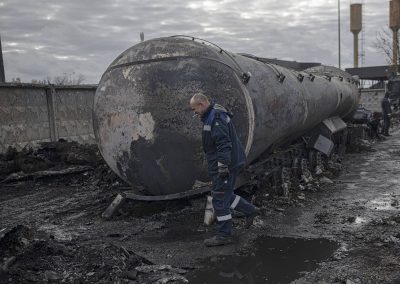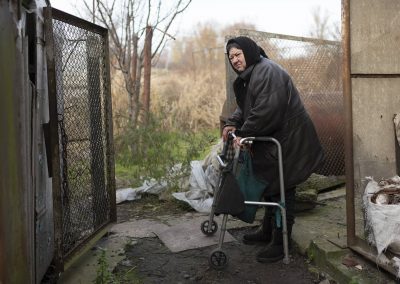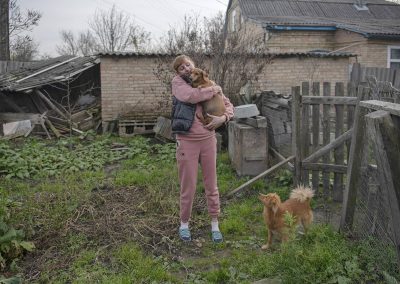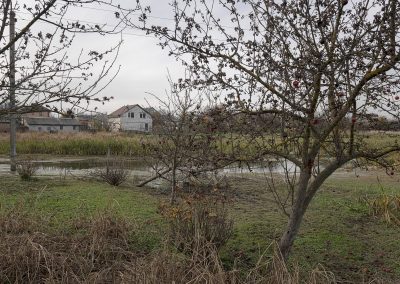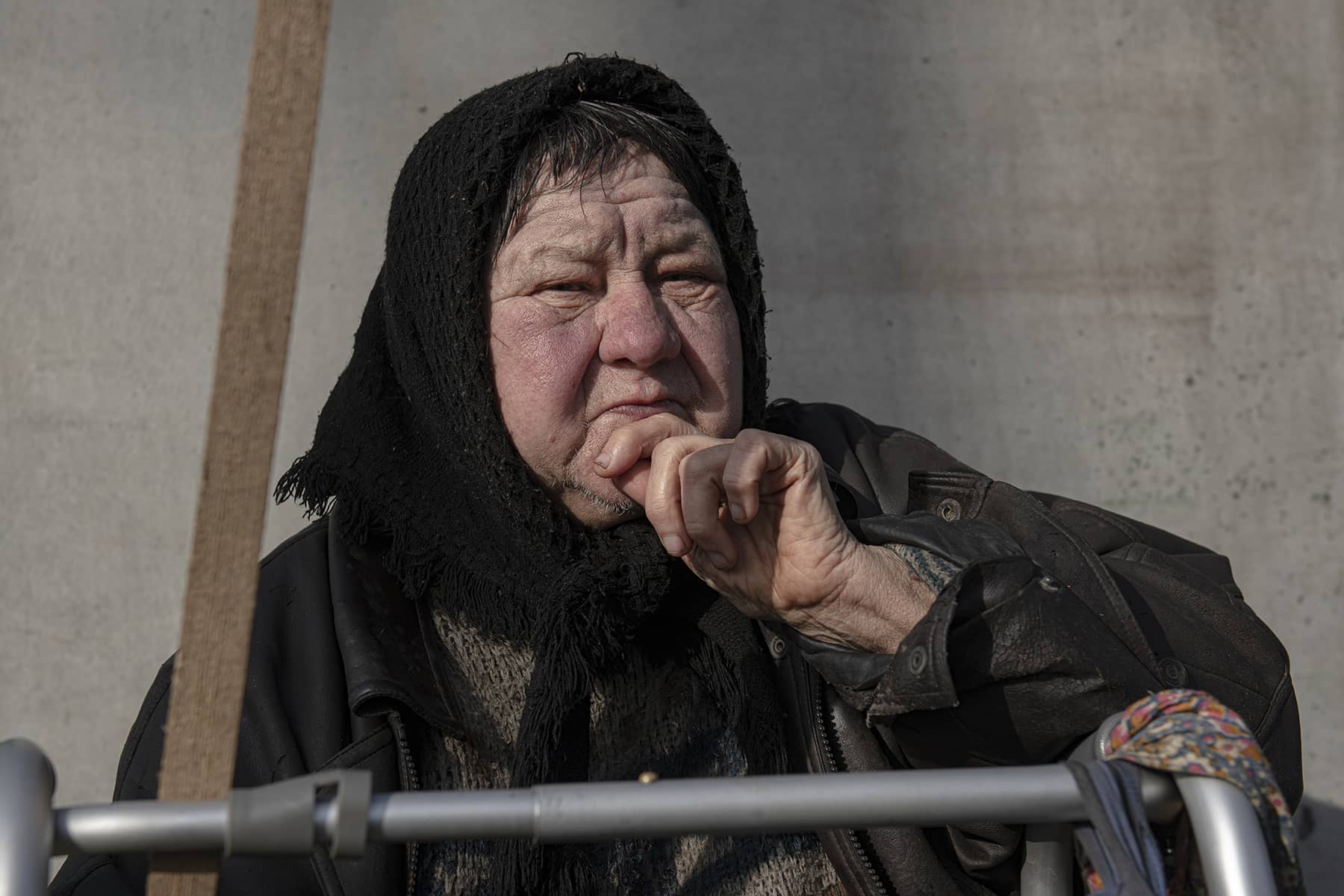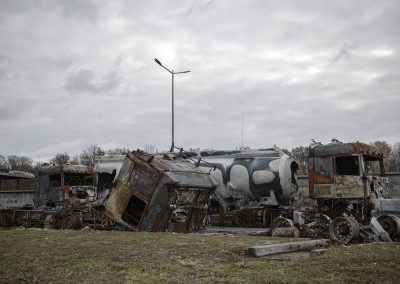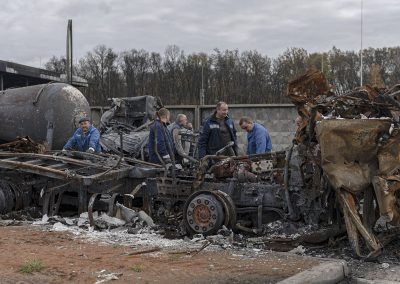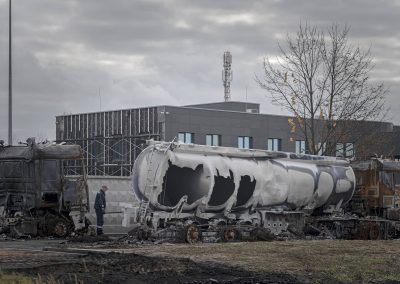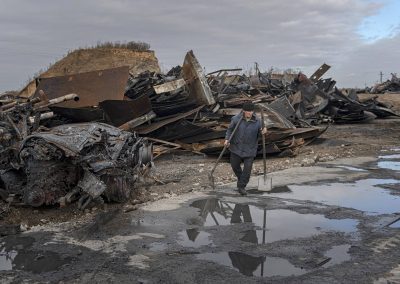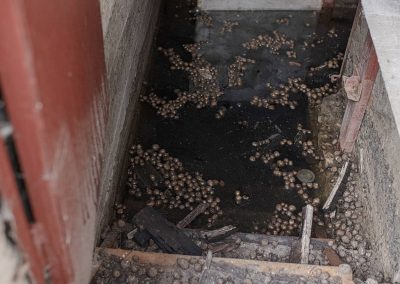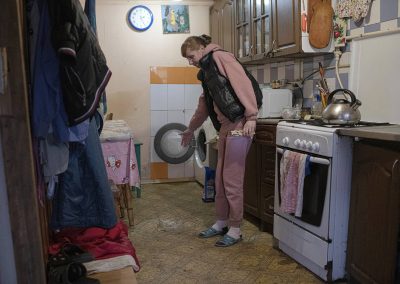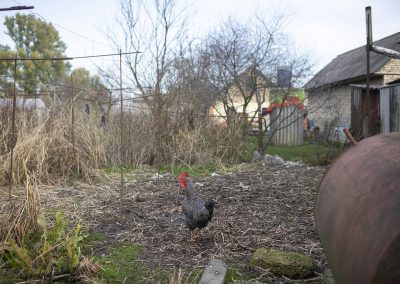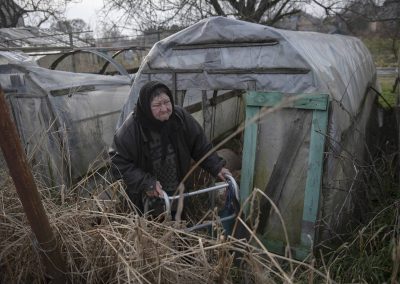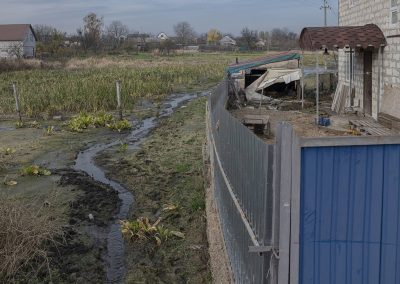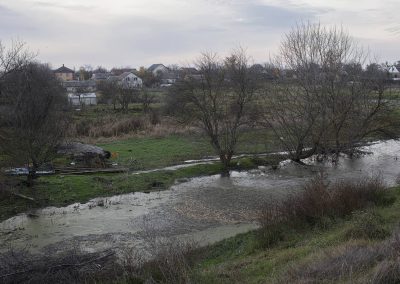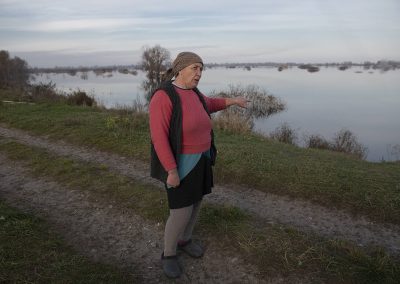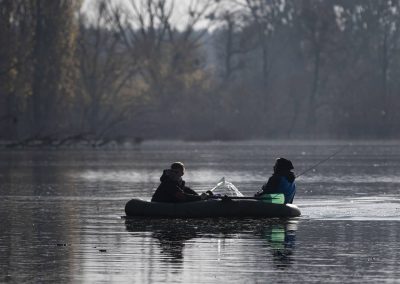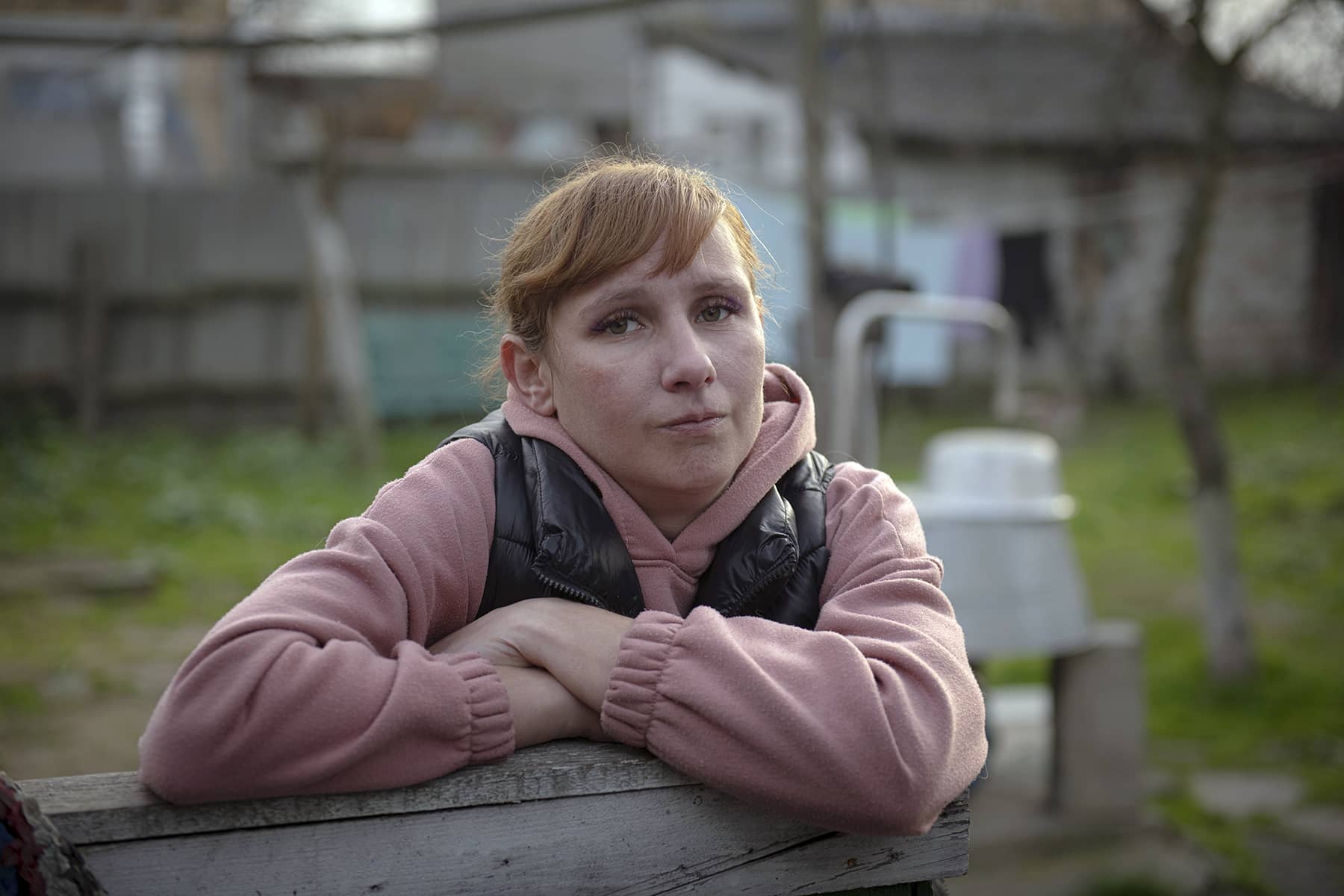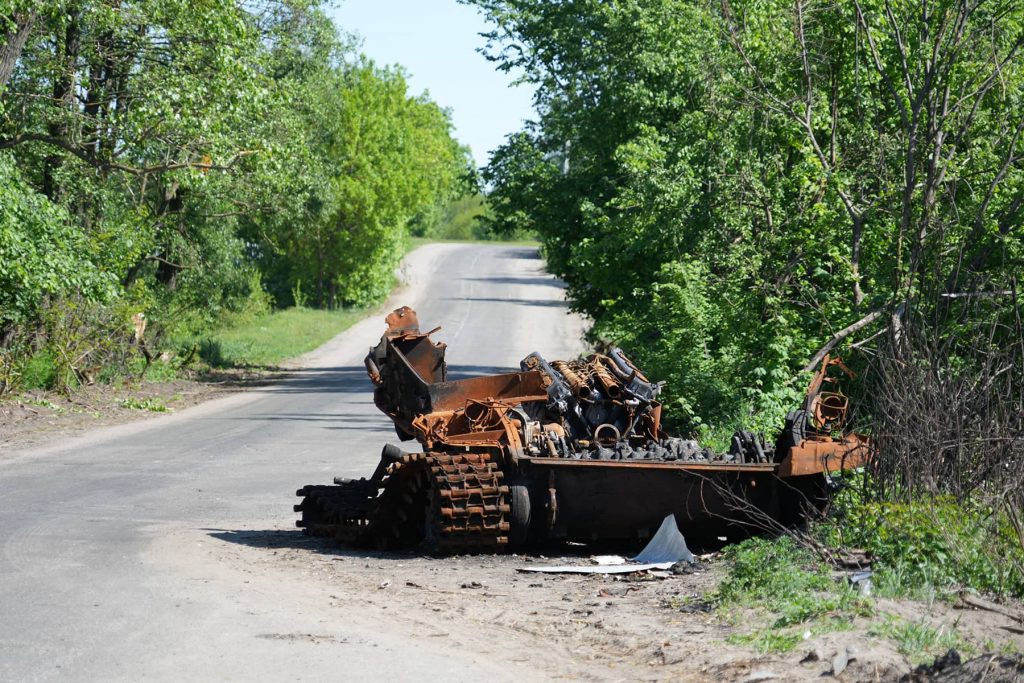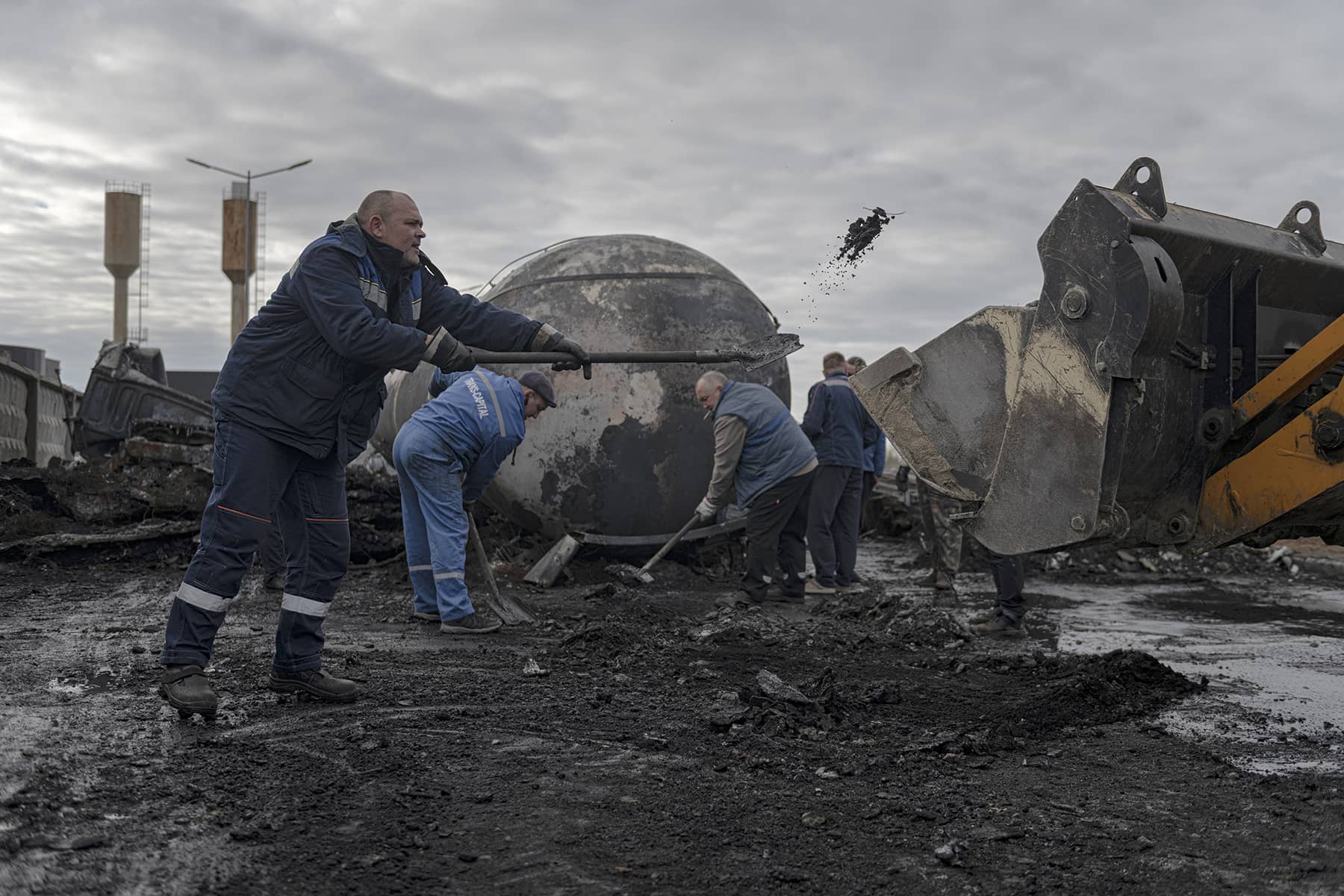
Olga Lehan’s home near the Irpin River was flooded when Ukraine destroyed a dam to prevent Russian forces from storming the capital of Kyiv just days into the war. Weeks later, the water from her tap turned brown from pollution.
“It was not safe to drink,” she said of the tap water in her village of Demydiv, about 40 kilometers (24 miles) north of Kyiv on the tributary of the Dnieper River.
Visibly upset as she walked through her house, the 71-year-old pointed to where the high water in March had made her kitchen moldy, seeped into her well and ruined her garden.
Environmental damage from the 8-month-old war with Russia is mounting in more of the country, with experts warning of long-term consequences. Moscow’s attacks on fuel depots have released toxins into the air and groundwater, threatening biodiversity, climate stability and the health of the population.
Because of the war, more than 6 million Ukrainians have limited or no access to clean water, and more than 280,000 hectares (nearly 692,000 acres) of forests have been destroyed or felled, according to the World Wildlife Fund. It has caused more than $37 billion in environmental damage, according to the Audit Chamber, a nongovernmental group in the country.
“This pollution caused by the war will not go away. It will have to be solved by our descendants, to plant forests, or to clean the polluted rivers,” said Dmytro Averin, an environmental expert with Zoi Environment Network, a non-profit organization based in Switzerland.
While the hardest-hit areas are in the more industrial eastern regions of Donetsk and Luhansk, where fighting between government troops and pro-Russian separatists has been going on since 2014, he said, the damage has spread elsewhere.
“In addition to combat casualties, war is also hell on people’s health, physically and mentally,” said Rick Steiner, a U.S. environmental scientist who advised Lebanon’s government on environmental issues stemming from a monthlong war in 2006 between that country and Israel.
The health impact from contaminated water and exposure to toxins unleashed by conflict “may take years to manifest,” he said.
After the flood in Demydiv, residents said their tap water turned cloudy, tasted funny and left a film on pots and pans after cooking. The village was under Moscow’s control until April, when Russian troops withdrew after failing to take the capital.
Ukrainian authorities then began bringing in fresh water, but the shipments stopped in October when the tanker truck broke down, forcing residents to again drink the dirty water, they said.
“We don’t have another option. We don’t have money to buy bottles,” Iryna Stetcenko told The Associated Press. Her family has diarrhea and she’s concerned about the health of her two teenagers, she said.
In May, the government took samples of the water, but the results have not been released, said Vyacheslav Muga, the former acting head of the local government’s water service. The Food Safety and Consumer Protection agency in Kyiv has not yet responded to an AP request for the results.
Reports by other environmental groups, however, have shown the effects of the war.
In recent weeks, Russia has targeted key infrastructure like power plants and waterworks. But even in July, the U.N.’s environmental authority already was warning of significant damage to water infrastructure including pumping stations, purification plants and sewage facilities.
A soon-to-be-published paper by the Conflict and Environment Observatory, a British charity, and the Zoi Environment Network, found evidence of pollution at a pond after a Russian missile hit a fuel depot in the town of Kalynivka, about 30 kilometers (about 18 miles) southwest of Kyiv.
The pond, used for recreation as well as a fish farm, showed a high concentration of fuel oil and dead fish on the surface — apparently from oil that had seeped into the water, A copy of the report was seen by the AP.
Nitrogen dioxide, which is released by burning fossil fuels, increased in areas west and southwest of Kyiv, according to an April report from REACH, a humanitarian research initiative that tracks information in areas affected by crisis, disaster and displacement. Direct exposure can cause skin irritation and burns, while chronic exposure can cause respiratory illness and harm vegetation, the report said.
Ukraine’s agriculture sector, a key part of its economy, also has been affected. Fires have damaged crops and livestock, burned thousands of hectares of forest and prevented farmers from completing the harvest, said Serhiy Zibtsev, forestry professor at Ukraine’s National University of Life and Environmental Sciences.
“The fires are so massive,” he said, adding that farmers “lost everything they were harvesting for winter.”
The government in Kyiv is providing assistance when it can.
In Demydiv and surrounding villages, flood victims were given the equivalent of $540 each, said Liliia Kalashnikova, deputy head of the nearby town of Dymer. She said the government would do everything it could to prevent long-term environmental effects, but she didn’t specify how.
Governments have an obligation to minimize environmental risks for the population, especially during war, said Doug Weir, research and policy director for the Conflict and Environment Observatory, a U.K.—based monitoring organization.
Some Ukrainians have already lost hope.
“I feel depressed — there’s water all around and under my house,” said Demydiv resident Tatiana Samoilenko. “I don’t see much changing in the future.”

